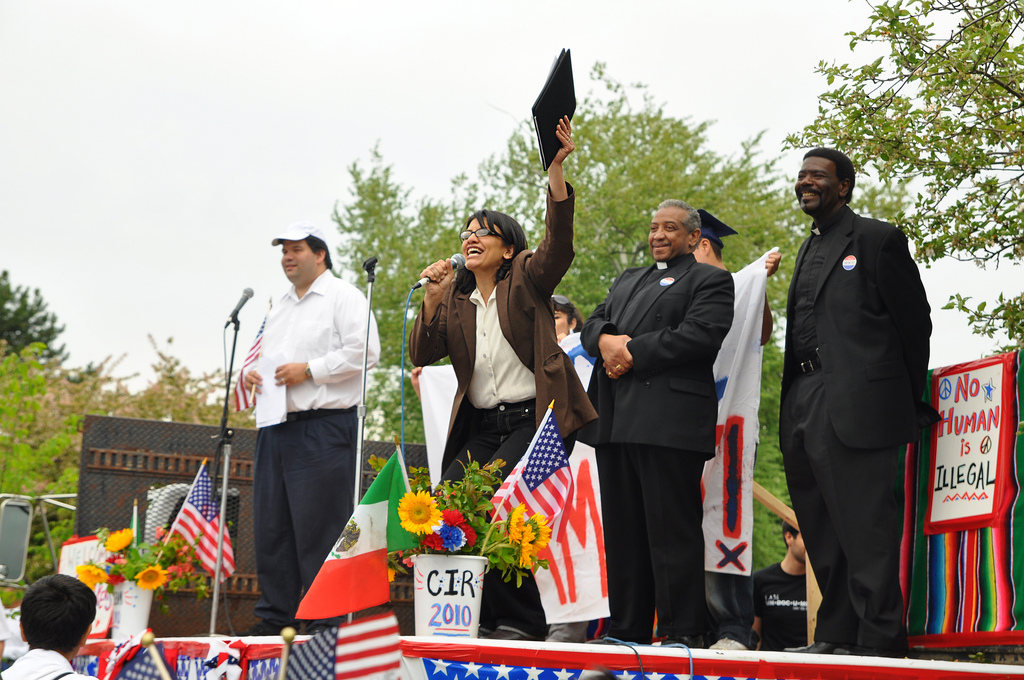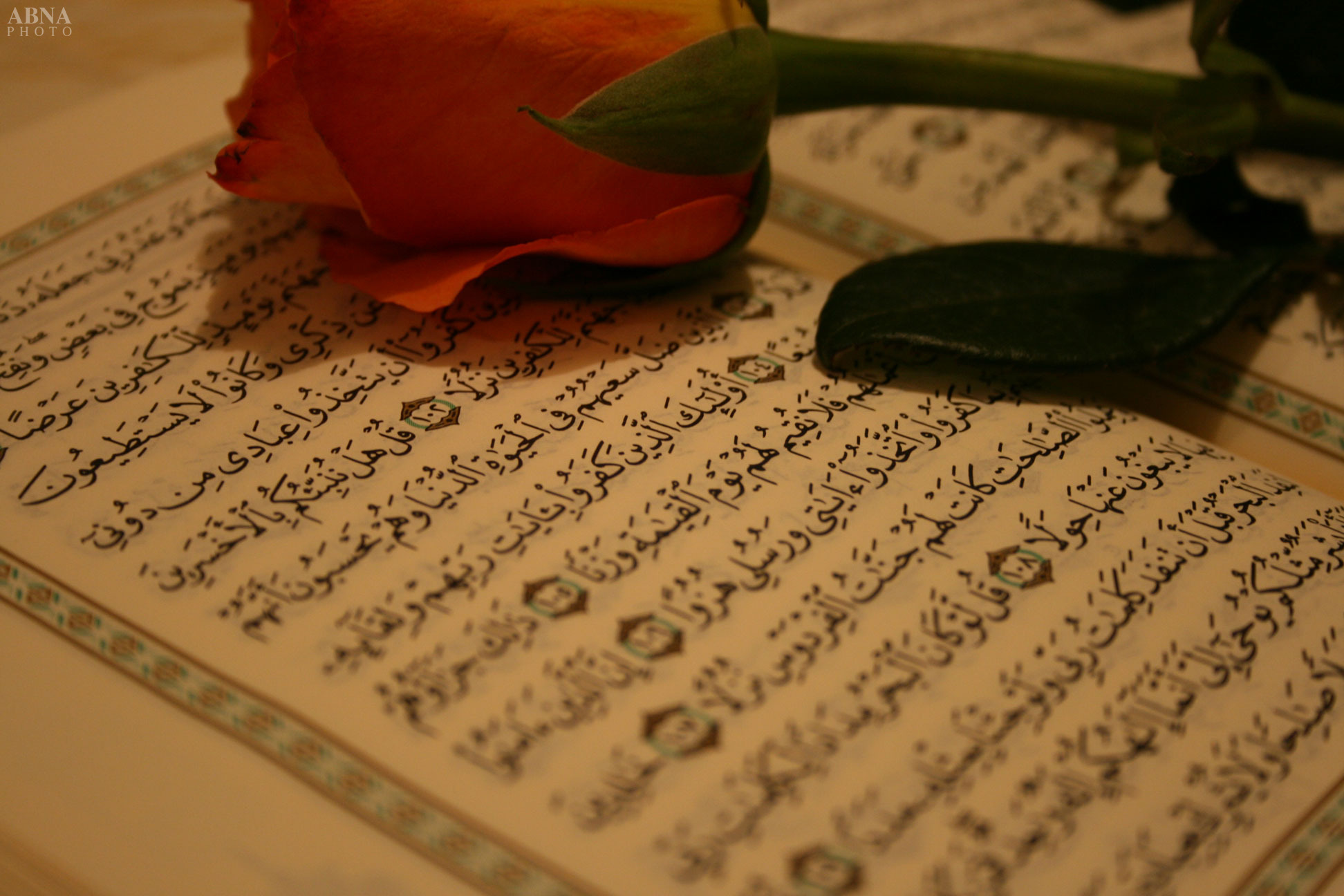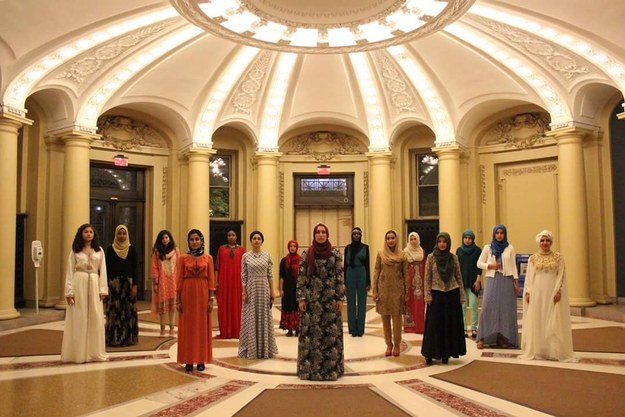High Fashion, Oscar Wilde once said, “is a form of ugliness so unbearable that we are compelled to alter it every six months.” Western women are slaves of fashion. Muslims, meanwhile, answer first to God.
At my health club on the campus of a Chicago university, I recently watched a young Muslim woman covered in head-to-toe religious garb — head scarf, long-sleeve tunic and long pants — as she played basketball with her boyfriend, a tall, black-haired youth dressed in jeans and a striped button-down shirt. All around them, shapely women in skimpy shorts and tight tank tops cavorted on treadmills and Stairmasters, but the black-haired youth had eyes only for his head scarf sweetie. Pretty and slender, the girl moved with the grace of a natural athlete. When her boyfriend missed a shot, she caught the ball on the short bounce, then, planting her sneaker clad feet firmly on the court, launched it toward the basket, where it whooshed easily through the net. Her boyfriend gave her a high five, and she grinned proudly.
Though loose fitting, the girl’s clothes were far from frumpy. With delicate embroidery on the front of her tunic and a floaty elegance to the soft trousers, the outfit recalled the kind of casual, boyish chic pioneered in the Jazz Age by Coco Chanel. Her hair and flesh were hidden completely, but hints of her lovely, willowy form were suggested in the contours of her clothing. What’s more, she seemed as confident in her attractiveness and as comfortable with her body as the half naked, pony-tailed coeds sweating around her.
As I watched the girl leave the club, her boyfriend trailing behind her carrying his backpack and hers, I had a startling thought. Hijab (“modest wear”) doesn’t have to mean female subservience and sexual repression.
Westerners have always been uneasy with Islamic dress, which often seems like a rebuke to our liberal values. Consequently, head scarves have been banned in schools in several European countries, including France, and earlier this week, French President Nicolas Sarkozy urged parliament also to outlaw burkas, the face-hiding, all-body covering sack, which he called “a sign of debasement” that has no place in a democracy.
Burkas are scary. They spark associations with the Klu Klux Klan and bank robbers, not to mention Afghanistan-bred terrorists. But burkas are the radical extreme of Muslim dress worn by only a fringe minority. I’ve never actually seen anyone wearing one in the U.S or France, where I’ve traveled extensively.
Sarkozy would better serve the cause of liberté, egalité, and fraternité by mandating sensitivity courses in why Muslim women wear hijab. Several of the Muslims I’ve talked to say their attitudes toward dress have less to do with repression, than with a strong belief that God commands both sexes to be modest (devout men wouldn’t be caught dead mowing the lawn or swimming shirtless) and a sharp sense of the difference between what’s appropriate for the public and private spheres.
Westerners often assume that Muslim women would get rid of their veils and head scarves, shawls and chadors — usually black, garbage-bag like garments that cover everything but the face — if given a chance. It must be a husband or father who forces them to cover up. That’s a serious misconception, says Kareem Mejri, a devout Muslim mother of two who also happens to be vice president of international business for the Metropolitan Life Insurance Company. “It has to come from the heart. A woman should not be forced to do anything,” she says. “My husband is more religious than me, but when I started wearing the [head] scarf only two years ago, he was completely shocked.”
Ms. Mejri, who lives with her family in Orland Park, a southwest suburb of Chicago, loves jewelry and make-up and has “tons” of Victoria Secret lingerie. “We care as much about beauty and fashion as do women everywhere,” she says. “And we wear whatever we want indoors, with our families.”
It might seem counter intuitive to non-Muslim Americans, but many Muslim women actually find hijab liberating. “I used to wear [short] skirts and fitted jackets like any normal business woman, and I travel all over the world,” says Ms. Mejri. “Often times, I’d be sitting in a meeting, and men would be staring at my body and not listening to what I was saying, especially in Latin America. What I find now is that they’re hearing me, they’re listening to what I have to say. There’s no distraction of sexual tension.”
Until recently, it’s been difficult to find attractive religious wear, and Muslim leaders in America know that young women who are surrounded by fashion TV shows, fashion magazines and fashion web sites will stray from hajib if they can’t find chic clothes that conform to Islamic requirements for modesty.
To that end last April, the Muslim Community Center in Morton Grove, Illinois, organized a fashion show. For the occasion, the community center’s school gymnasium was outfitted with an elevated, 45-foot runway draped in pink and large beaded chandeliers to resemble the tents at New York’s Bryant Park during Fashion Week. The 40 models vamped to the tunes of Islamic music blaring from loudspeakers as they paraded in colorful tunics, pants suits, dresses, headscarves and shawls.
The show featured clothing from online and local retailers, including Contemporary Modest Wear, the Orland Park store owned by Ms. Mejri and her husband. “We purchase things from Paris and Turkey, skirts with mermaid [hems], and colors and fabrics that are more appealing to the eye than the dowdy old school clothing,” says Ms. Mejri.
Westerners who tsk, tsk over hajib clad women, convinced that religious dress always reflects repressive, sexist attitudes, should consider their own history. In the west, fashion has often seemed like a torture foisted on women by misogynistic men. It was a male doctor in France, after all, who during the Napoleonic Wars invented the laced, S-shaped corset that allowed generations of women to cinch themselves to near suffocation. Couturier Charles Frederick Worth followed with filth collecting skirts, seat cushion bustles and catering tray hats laden with frou- frou and dead birds. Now we have Marc Jacobs’s mini-skirt rompers that look like something your toddler wears, and Christian Louboutin’s disaster-in-waiting eight inch high heels.
High Fashion, Oscar Wilde once said, “is a form of ugliness so unbearable that we are compelled to alter it every six months.”
Western women are slaves of fashion. Muslims, meanwhile, answer first to God.
Gioia Diliberto is a journalist and the author of The Collection. This article was previously published at The Huffington Post and has been reprinted here with permission of the author.





I really disagree with you. Let me say I am a Muslim. I’m white and I’m Palestinian. I feel that you are criticizing Western women for what they wear by comparing and contrasting Muslim and western women. Muslims should never judge people for what they wear because we know how it feels to be criticized and judged for what we wear. You want to make Muslim women look better by making western women look very immodest with statements like “Western women are slaves of fashion. Muslims, meanwhile, answer first to God.” (Western women are not raised as Muslim women and so they should not be judged for it.)and this statement
“What’s more, she seemed as confident in her attractiveness and as comfortable with her body as the half naked, pony-tailed coeds sweating around her .” There are white feminists who do not agree with western fashion and who believe that these fashions are oppressive. It’s sad because I feel you have some good points in your essay but the way you say things and some of your points criticize western women instead of building bridges and being understanding. Aren’t we all women? Don’t we all want equality regardless of race and religion?
I forgot to say one more thing about your comment “Western women are slaves of fashion. Muslims, meanwhile, answer first to God.” If i was in a bikini it shouldn’t make me any less or more to answer to God just as if I was dressed in a hijab.
I don’t think this author is a Muslim. You can google her and it should become fairly obvious.
“If i was in a bikini it shouldn???t make me any less or more to answer to God just as if I was dressed in a hijab.”
So why bother with the hijab in the first place? Aren’t you, by saying this trivializing the rationale of the Muslim women who choose to wear hijab, by saying it makes no real difference?
I do not have to prove to you or any one that I am Muslim. How can you google one name? Not that you need to know but Meena is not my name, its a nick name. You can attack me all you want but what I have stated before is my opinion. There is a way to disagree with a person respectfully and you are not respectful by stating I am not Muslim.
You have not rebuttled any of my other comments. I believe that wearing a hijab does not make a woman Muslim. How the woman behaves makes her a Muslim. You do not have to wear a hijab to be a good Muslim. A woman can wear a hijab and yet behave cruely, nastily, selfishly, and so forth. Does it make her a good Muslim just because she wears the hijab? I am NOT attacking Muslim women for wearing the hijab, it is their choice. Whether I believe we Muslim women should wear the hijab or not was NOT my point about this essay. If you read what i wrote my main point was that the author of this essay has criticized western women unfairly. Can you think beyond race and religion? Can you be more open minded?
Meena,
One clarification: I believe Mohammed Husain was stating that the author of the blog post, Gioia Diliberto, is not a Muslim (‘author’ was referring to her, not you).
“You do not have to wear a hijab to be a good Muslim. A woman can wear a hijab and yet behave cruely, nastily, selfishly, and so forth.”
In a nutshell, this is why the more traditionally religious reject this argument as careless and ultimately incoherent and it has nothing to do with not being “open-minded.” The traditionally religious see that their is a near consensus that hijab is a religious obligation like other religious obligations. A good Muslim is one who fulfills his/her religious obligations, ethical and legal. Now it would then be absurd to say, “you don’t need to wear hijab to be a good Muslim.” Because that would be equivalent to saying, you need not fulfill your religious obligations to be a good Muslim, and that’s seen to be absurd (quite rightly I might add).
Now one may make separate arguments, and say that one can still qualify as being a good Muslim, while not fulfilling x or y obligation, with the argument that being a good Muslim means trying ones best to fulfill one’s obligations, even if it means falling short in some areas. But this is quite different than saying, you need not even be concerned with fulfilling some given obligation and still be a good Muslim.
Now as for the argument that there are some hijabis, that wear hijab and yet are vicious little rascals underneath the veil; well, this isn’t an argument against the obligation of hijab. There are evil people who pray namaaz, yet that isn’t an argument against the obligation of prayer.
If you want to effectively dispute the obligation of hijab, and say that in fact Muslims have had it all misunderstood, that requires studying for sometime, until one becomes a mujtahid, at which time you can analyze the primary sources and come to a legal ruling of your own. It would also require some reasoning as to why the new legal ruling should be preferred to the old.
So many people object to hijab in the name of a women’s right to dress as she pleases. Yet the reality is, that there are many areas in our public and private lives in which we must conform to some dress code. Professional life is a very good example of this. A doctor can’t walk into a hospital in jeans and a tank top without repraisal and judgement. No one seems to invoke a women’s right to express herself in this case. Why is that? I think it deserves some consideration because there are obvious parallels.